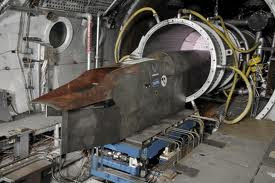India's first Hypersonic Technology Demonstrator Vehicle being tested
Hyderabad – A series of tests are underway for India's first Hypersonic Technology Demonstrator Vehicle (HSTDV) and this will get a boost with the wind tunnel facility coming up here.
Defence Research and Development Organisation (DRDO) is confident that HSTDV, which has already achieved 6.5 Mach, will achieve its aim of scramjet flight for 20 seconds.
Mach is commonly used to represent the speed of an object when it is travelling close to or above the speed of sound.
V.G. Sekaran, director general (missiles and strategic systems), DRDO, told reporters here Wednesday they have already achieved some milestones in terms of engine development.
"HSTDV would give us a lead in hypersonic vehicle design, scramjet, material technology and how to manage environment which is peculiar to hypersonic flying engines," he said.
He said work on the wind tunnel required for tests had started and it would be ready in one-and-half years. He was confident this would reduce the development cycle in hypersonic programme.
Issues related to a long term hypersonic programme in the country will be discussed at a two-day international symposium beginning here Thursday.
The sixth symposium on "Applied aerodynamics and design of aerospace vehicles" will discuss the roadmap for some of the futuristic hypersonic programmes.
Prahlada, vice chancellor, Defence Institute of Advanced Technology, said India was looking at extreme technologies in aerodynamics aimed at making aircraft efficient, green and quiet with smooth flying.
He said India required Aerostat and aerodynamics in a big way. Two types of Aerostat were developed and deployed which can go up to one km. Aerostat which can go up to four km and carry two tonnes of load were under development, he added.
"Our aim is it develop an Aerostat which can go to 10 km and lift 10-20 tonnes in bad terrain," he said.
A series of Aerostats will be developed that can be used both for civilian and military purposes.
Prahlada said work was also on to develop micro air vehicles, emulating how some birds like hummingbird and bumblebee fly.
"These birds have very special aerodynamic control. We have not been able to simulate similar aerodynamics for unmanned micro air vehicle. We are looking at using smart material which works like these birds," he said.
He pointed out these birds can stay where they are and keep lifting without moving forward. Normally when an aircraft lifts, it has to move. Both forward motion and lift are linked but in case of birds, it is delinked, he added.
Source


















